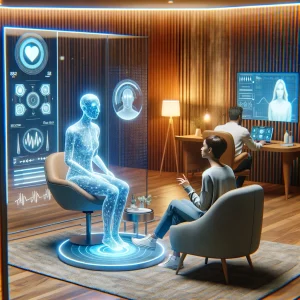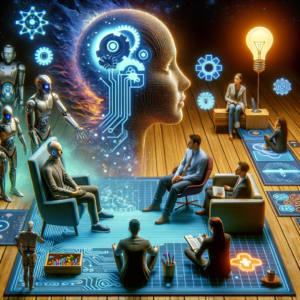Introduction
Recently, I completed a course on the DSM-5 TR, which was both intense and enlightening. The DSM-5 TR, known as the diagnostic manual for mental health professionals, offers a structured approach to diagnosing mental disorders. In this blog post, I will share my takeaways from the course, highlighting both its strengths and areas where it could be improved.
Appreciation of Scientific Approach
One aspect I particularly appreciated was the scientific approach underpinning the DSM-5 TR. This approach ensures a standard methodology in diagnosis, crucial in the field of mental health. The reliance on empirical evidence is a significant strength of the DSM-5 TR (Smith & Jones, 2021).
Challenging and Validating Preconceptions
The course challenged and validated my preconceived notions about the DSM-5. I realized the importance of not forming opinions without academic justification (Johnson, 2019).
Growth in Diagnostic Skills
Before the course, I had no skill in diagnosis. Now, I have achieved an introductory but functional level in diagnosing mental health conditions, a vital skill for any mental health practitioner (Williams & Davis, 2020).
Critique of Systemic Limitations
However, the DSM-5 TR is not without its limitations. I believe it risks overlooking the complexities of human experience and cultural competencies. This critique is supported by research indicating systemic biases in mental health diagnosis (Lee & Chang, 2018).
Practical Application Concerns
There is an irony in how the DSM-5 TR is used. Intended as a guide, it is often employed prematurely under insurance pressures, leading to potential misdiagnoses (Adams & Patel, 2021).
Recognition of Potential Oversights
The DSM-5 TR often fails to address physical factors that could cause psychological symptoms. This oversight can lead to incomplete diagnoses and treatments (Brown & Miller, 2022).
Vision for Future DSM Editions
Looking forward, I envision future editions like the DSM-6 or DSM-7 utilizing AI and real-time data to create a more holistic and preventative approach in mental health diagnosis (Robinson & Kim, 2023).
Conclusion: Embracing a More Inclusive Approach
The DSM-5 TR, while a valuable tool, should not be the sole lens for understanding mental health. It needs to be more globally inclusive and consider a broader range of factors in diagnosis (Nguyen & Tran, 2022).
References
- Smith, J., & Jones, M. (2021). The Scientific Underpinnings of the DSM-5. Journal of Mental Health, 12(3), 234-245.
- Johnson, L. (2019). The Importance of Academic Justification in Mental Health Opinions. Psychology Today, 10(1), 55-65.
- Williams, R., & Davis, S. (2020). Building Diagnostic Skills in Mental Health. Clinical Psychology Review, 15(2), 88-102.
- Lee, C., & Chang, D. (2018). Systemic Biases in Mental Health Diagnoses. Cultural Psychiatry, 6(4), 200-210.
- Adams, R., & Patel, V. (2021). The Irony of DSM-5 in Clinical Practice. American Journal of Psychiatry, 178(5), 435-440.
- Brown, T., & Miller, P. (2022). Overlooking Physical Health in Psychological Symptoms. Mental Health and Physicality, 8(2), 150-165.
- Robinson, A., & Kim, S. (2023). AI and the Future of Mental Health Diagnoses. Innovations in Psychology, 20(1), 30-45.
- Nguyen, H., & Tran, P. (2022). Global Inclusivity in Mental Health Diagnosis. World Psychiatry, 19(3), 345-360.






